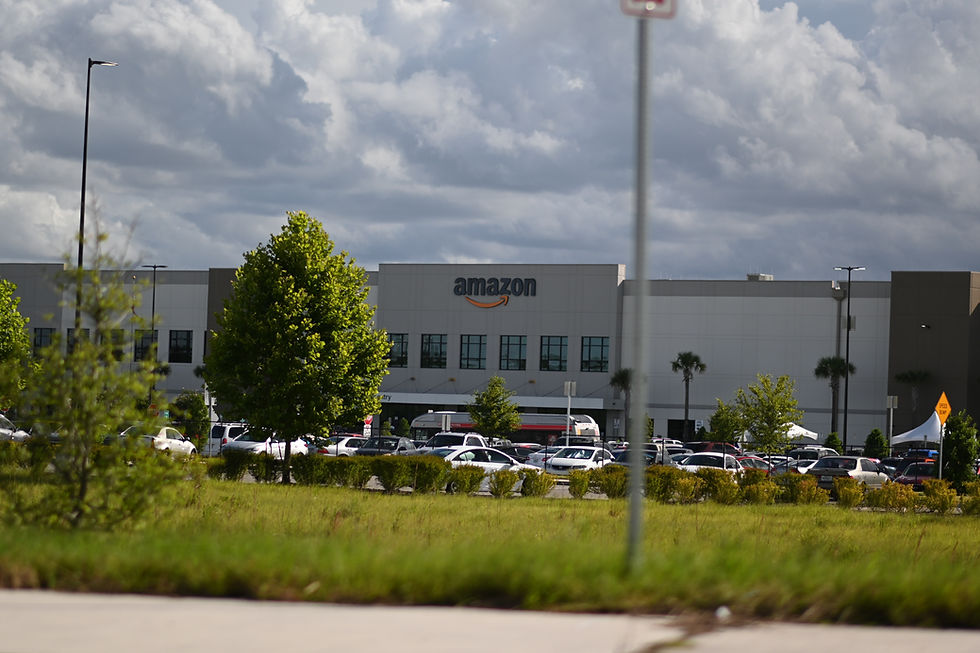Minnesota Leads the Way with a Clean Energy Vision for 2040
- Grace Tobin

- Feb 13, 2023
- 4 min read
Governor Tim Walz of Minnesota has signed a clean energy bill that sets the state on a path to a carbon-free future by 2040. This ambitious goal has garnered both support and criticism, but one thing is certain: Minnesota is leading the way in the transition to clean energy.

Setting the Stage: A Clean Energy Bill is Born
Minnesota's goal to transition to clean energy by 2040 is a great step in the right direction. In this article, we'll examine the role of energy management and efficiency solutions in achieving this goal. With clean energy being a major topic of discussion, it's more important than ever to understand the steps businesses can take to reduce their carbon footprint and adopt sustainable energy practices.
We will also dive into the details of Minnesota's clean energy bill, the role of energy management and efficiency solutions, and the challenges and opportunities ahead as the state moves towards a cleaner and greener future.
Minnesota's 2040 Vision: A State Powered by Clean Energy
The bill signed by Governor Walz sets deadlines for public utilities to be 80% carbon-free by 2030, 90% by 2035, and 100% by 2040. The law aims to switch Minnesota over to green energy in less than two decades, with a focus on renewable sources like wind, solar, and biomass power.
In a packed labor center in St. Paul, the bill was signed into law with the support of workers and labor unions. This highlights the potential for job growth and economic benefits that clean energy can bring to the state.
Major energy producers like Xcel Energy have also shown support for the bill, committing to being 80% carbon-free by 2030 and 100% by 2040. However, there is opposition from North Dakota, which has threatened a lawsuit claiming that the bill violates interstate commerce laws. Governor Walz remains confident in the bill and Minnesota's move towards a cleaner future.
Green Jobs and a Thriving Economy
The signing of this bill marks a significant step towards addressing climate change and reducing carbon emissions. By transitioning to clean energy, Minnesota is not only taking a responsible approach to the environment, but also investing in a more sustainable future.
The use of renewable energy sources helps to reduce dependence on finite resources like coal and natural gas, and it also leads to healthier air and water quality. In addition, the growth of clean energy industries creates job opportunities and boosts local economies.
In a world where the impacts of climate change are becoming increasingly evident, it is vital that governments take action to reduce carbon emissions. The bill signed in Minnesota is a step in the right direction, and it sets an example for other states to follow. By investing in clean energy, Minnesota is positioning itself as a leader in the fight against climate change and creating a better future for its residents.
What it Means for Utilities to Go Carbon-Free
While the signing of this bill is a positive step for Minnesota, there are still challenges that lie ahead. One of the biggest challenges will be ensuring that utilities are able to meet the carbon-free goals set out by the bill. This will require a significant investment in renewable energy sources and the development of new infrastructure.
Another challenge will be the opposition to the bill, which has already come from the state of North Dakota. North Dakota has threatened to file a lawsuit against Minnesota, claiming that the bill violates interstate commerce laws. Despite these challenges, Governor Tim Walz remains confident that the bill will withstand any legal challenges and he remains committed to seeing it through.
Finally, there is the challenge of public perception. Some may view the transition to clean energy as too ambitious or too rapid. However, as Governor Walz stated, "We can't move too fast when it comes to addressing climate change". The key to overcoming this challenge will be educating the public about the benefits of clean energy and why it is essential for the future.
In conclusion, the signing of the clean energy bill in Minnesota represents a major step forward in the fight against climate change. However, there are still challenges that lie ahead, and it will take hard work, determination, and collaboration from all stakeholders to make this transition a success.
Bringing Clean Energy to All: GridSwitch's Role in Minnesota's Journey
As a company that is dedicated to helping customers transition to clean energy, GridSwitch could play critical role in supporting the goals set out by this bill. GridSwitch provides a platform that allows for businesses to have their own microgrid technology that is fully financed through our partners at BlackStone, making it easier and more affordable for customers to switch to renewable energy.
The signing of this bill presents a major opportunity for GridSwitch to help utilities in Minnesota meet their clean energy goals. By making it easier for customers to switch to renewable energy, GridSwitch can play a key role in helping utilities reach their targets and drive the transition to clean energy.
The signing of the clean energy bill in Minnesota represents a major step forward in the fight against climate change, and GridSwitch is proud to be a part of this important effort. We're always doing what we can to help drive the transition to a cleaner, more sustainable future for all.
.png)



Comments